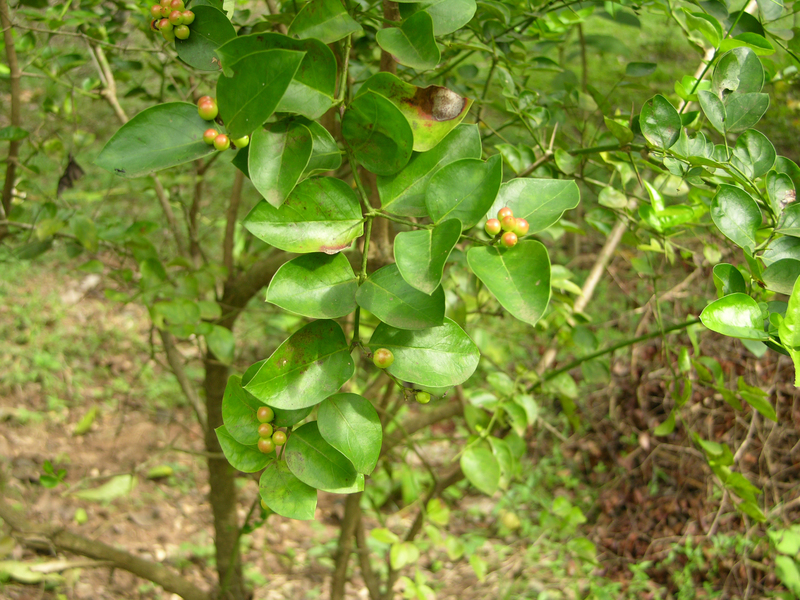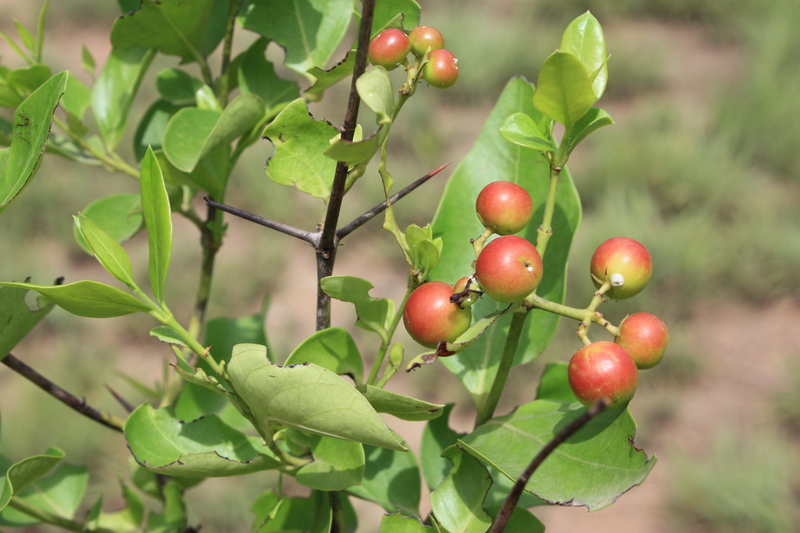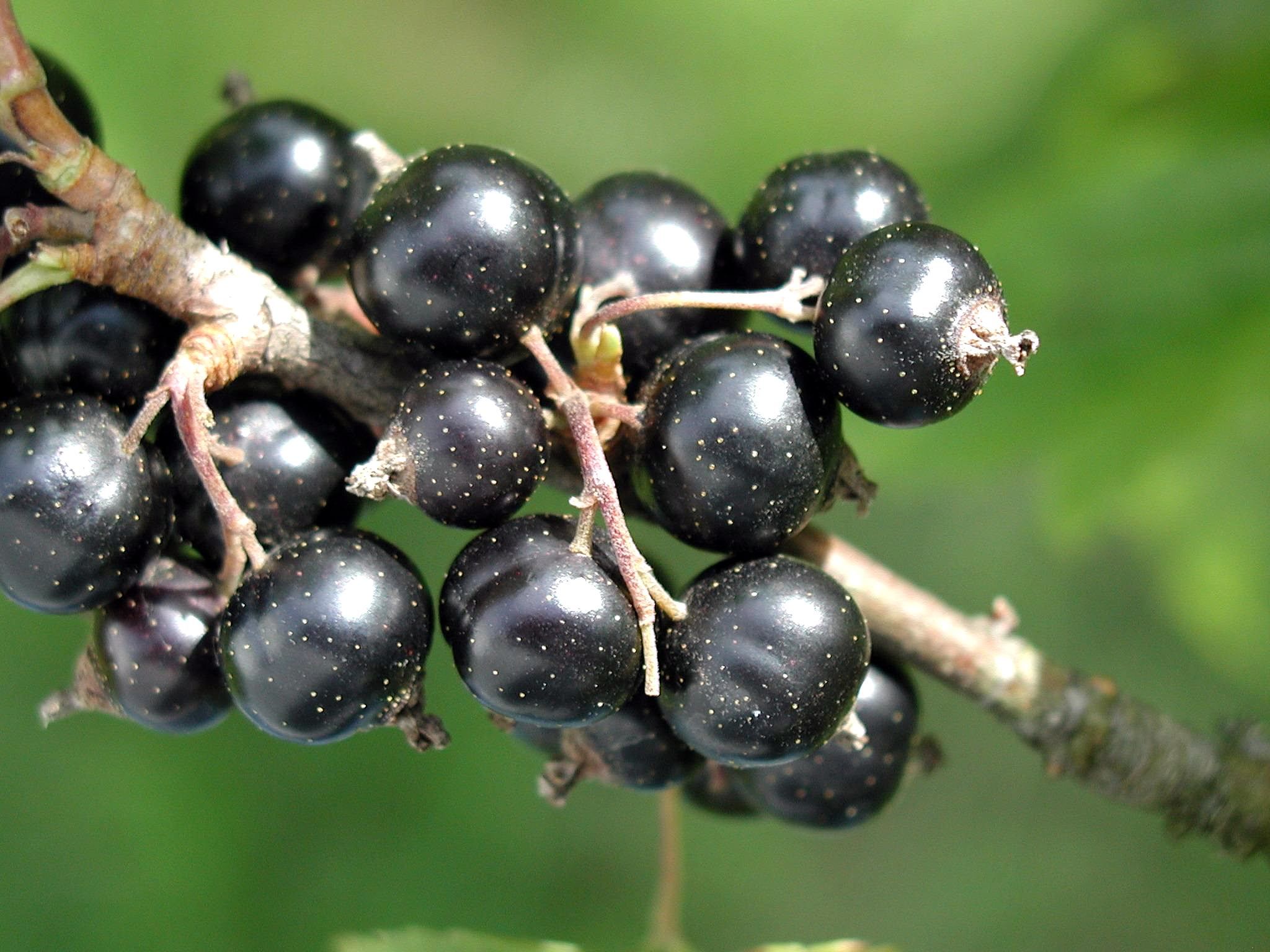Carissa spinarum
Karanda - plum ( Carissa edulis), flowering
The Karanda - plum ( Carissa edulis) is a flowering plant in the genus of the wax trees in the family of the dogbane family ( Apocynaceae ). The plant is native to Africa and South Asia. The part of the name " plum " refers to the appearance of the fruit; the species is not closely related to the plum.
Description
The Karanda - plum is a thorny evergreen. It grows as a shrub or small tree, reaching heights of growth to more than 5 meters. The bark is gray and smooth; it is reinforced with woody 0.5 to 5 cm long spines, which often occur in pairs and rarely branch. Young branches are usually densely pubescent, sometimes glabrous. The leaves are leathery against permanent, dark green and about 3-6 cm long. They have a rounded leaf base and running towards the end to a point. The leaf shape is ovate to elliptic. The petiole is very short with 2.5 to 5 mm in length. The leaves are often hairy on both sides. However, there are also copies with completely hairless leaves; in described by the Flora Zambesiaca circulation area, all intermediate forms of Behaarungstyps be observed.
The flowers are terminal; they smell sweet and are pinkish white. The flower is about 2 inches tall, short stalks and fünfzählig (rarely sechszählig ). The sepals are 2 to 4.5 mm long. The corolla is 1-2 cm long and tubular; the petals are narrow lance-shaped and up to 1 cm long. The dust bags are 1.5 to 2 mm. The ovary is about 1 mm long. The berries are about an inch ( 0.6 to 1.1; rarely to 2.5 cm) tall and plum -shaped. They are initially green, when ripe they turn dark red to blue-black. The berries contain 2-4 seeds.
Distribution and location
The home of Karanda Plum extends over large parts of Africa and South Asia. The deposits are located in Africa in Angola, Ethiopia, Botswana, Guinea, Malawi, Namibia, Nigeria ( where he also Berry plateau known), Senegal, Uganda, Zimbabwe and the South African Transvaal, as well as in Madagascar. The Asian reserves are located in Yemen, India and Thailand.
For its edible fruits, it is now grown in other countries, such as China ( Yunnan Province ) and in the USA ( California and Florida).
The Karanda plum grows preferentially in the open tree savannah, often on termite mounds or in the riverine vegetation.
Use
The berries of Karanda plum are edible.
System
The first known description of the type written by Peter Forsskål and was published posthumously by his early death in 1775. Forsskål gave the plant the name Antura edulis. The valid first description by Martin Vahl as Carissa edulis was published in 1790. For the Karanda - plum a variety of synonyms is known:
- Antura edulis Forssk.
- Antura hadiensis G. F. Gmelin
- Arduina edulis ( Forssk. ) Spreng.
- Azima pubescens Suesseng.
- Carissa dulcis Shoe Mach. & Thonn.
- Carissa edulis var major Stapf
- Carissa edulis var tomentosa (A. Rich. ) Stapf
- Carissa pilosa Schinz
- Carissa pubescens A. DC.
- Carissa tomentosa A. Rich.
- Jasminonerium dulce ( Schumach. ) Kuntze
- Jasminonerium edule ( Forssk. ) Kuntze
- Jasminonerium pubescens (A. DC. ) Kuntze
- Jasminonerium tomentosum (A. Rich. ) Kuntze










